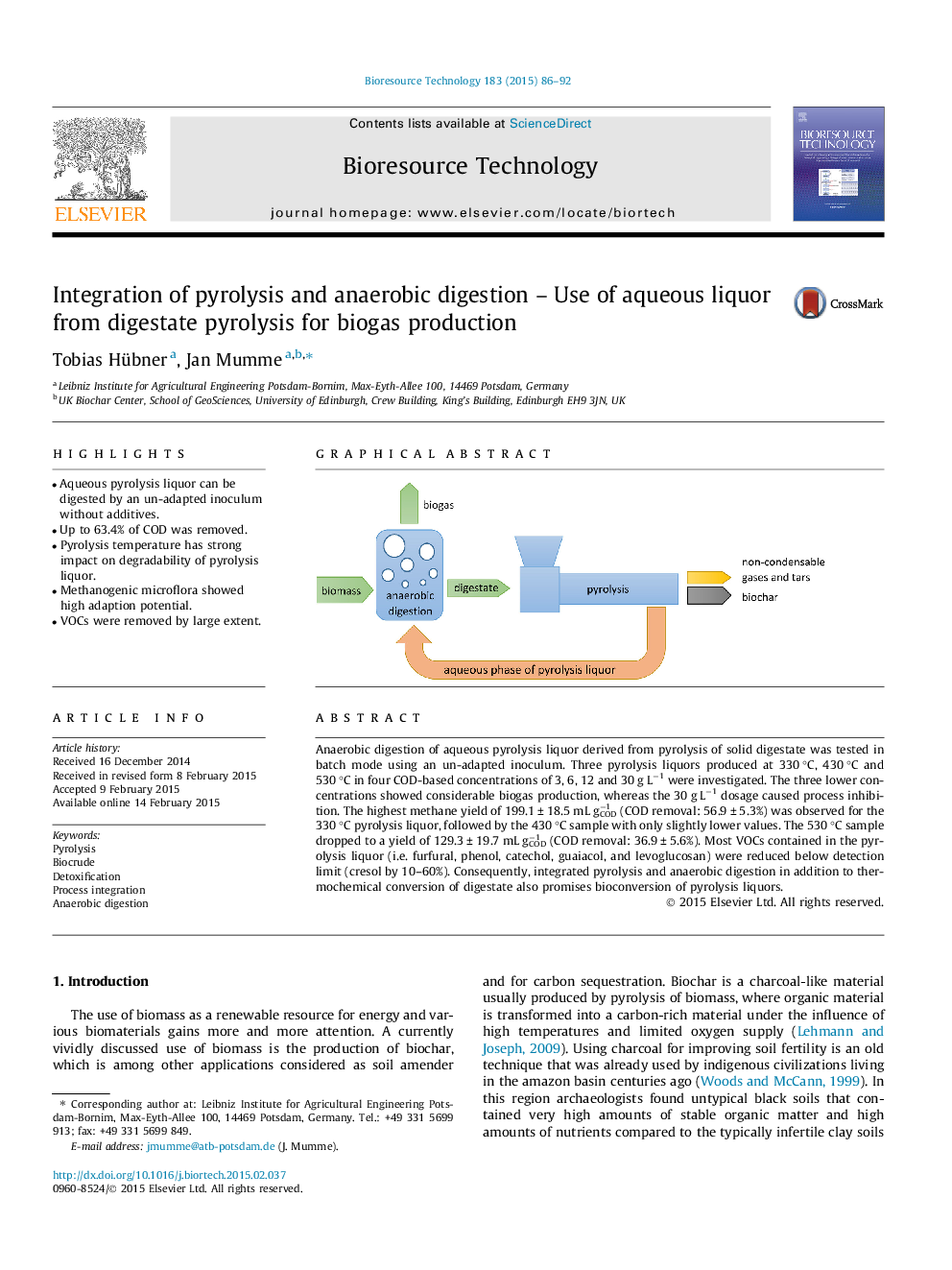| Article ID | Journal | Published Year | Pages | File Type |
|---|---|---|---|---|
| 679875 | Bioresource Technology | 2015 | 7 Pages |
•Aqueous pyrolysis liquor can be digested by an un-adapted inoculum without additives.•Up to 63.4% of COD was removed.•Pyrolysis temperature has strong impact on degradability of pyrolysis liquor.•Methanogenic microflora showed high adaption potential.•VOCs were removed by large extent.
Anaerobic digestion of aqueous pyrolysis liquor derived from pyrolysis of solid digestate was tested in batch mode using an un-adapted inoculum. Three pyrolysis liquors produced at 330 °C, 430 °C and 530 °C in four COD-based concentrations of 3, 6, 12 and 30 g L−1 were investigated. The three lower concentrations showed considerable biogas production, whereas the 30 g L−1 dosage caused process inhibition. The highest methane yield of 199.1 ± 18.5 mL gCOD−1 (COD removal: 56.9 ± 5.3%) was observed for the 330 °C pyrolysis liquor, followed by the 430 °C sample with only slightly lower values. The 530 °C sample dropped to a yield of 129.3 ± 19.7 mL gCOD−1 (COD removal: 36.9 ± 5.6%). Most VOCs contained in the pyrolysis liquor (i.e. furfural, phenol, catechol, guaiacol, and levoglucosan) were reduced below detection limit (cresol by 10–60%). Consequently, integrated pyrolysis and anaerobic digestion in addition to thermochemical conversion of digestate also promises bioconversion of pyrolysis liquors.
Graphical abstractFigure optionsDownload full-size imageDownload as PowerPoint slide
